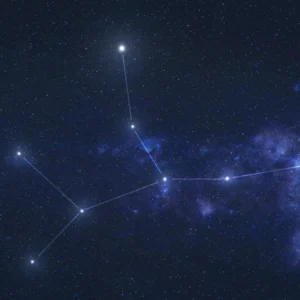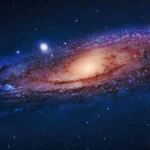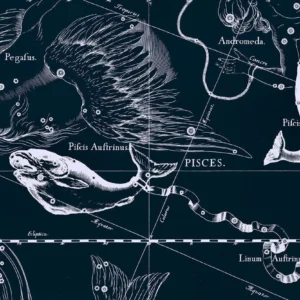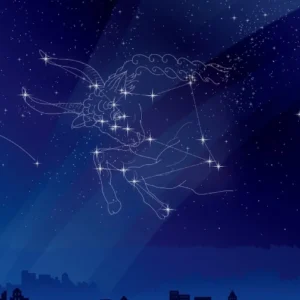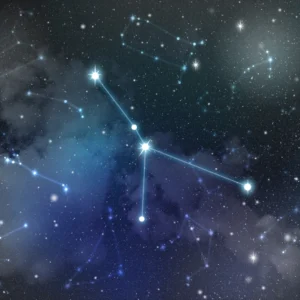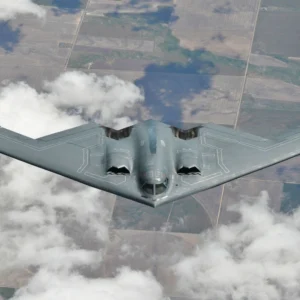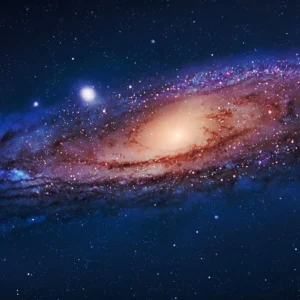The Serpent Constellation is one of the most interesting constellations in our sky. Why? Because it is the only one divided into two parts. You can separately spot the Head (Lat. Serpens Caput) and the Tail (Lat. Serpens Cauda). Between them lies another constellation – Ophiuchus. This unique arrangement makes it a special star formation for astronomers and anyone who loves stargazing. But that’s not all. The constellation is also tied to myths and stories.
General Information About the Serpent Constellation
It “lives” around Ophiuchus. It looks like a huge snake held in the hands of a mythological hero. The Head is located higher (to the north), and the Tail is lower (to the south). Because of this arrangement, it appears as though the snake is embracing Ophiuchus.
The Serpent Constellation is quite large. It ranks 23rd in area among the 88 modern constellations. It’s best observed in the summer from the Northern Hemisphere. During June and July, it is relatively easy to spot. It contains 106 stars visible to the naked eye.
Position and Characteristics of the Serpent Constellation
It has a unique position among the stars. It consists of two separate parts:
- Head (Serpens Caput)
- Tail (Serpens Cauda)
These two parts are separated by Ophiuchus (Ophiuchus). It appears as though Ophiuchus is holding the snake in his hands. This positioning makes this star formation one of a kind.
Key Characteristics:
- Size: 23rd among the 88 modern constellations
- Total area: approximately 637 square degrees
- Head coordinates: right ascension 15-16 hours, declination about +10°
- Tail coordinates: right ascension 17-18 hours, declination about -10°
- Best viewing time: June-July, evening hours, from the Northern Hemisphere
This constellation borders Scorpius, Libra, Ophiuchus, Sagittarius, and others.
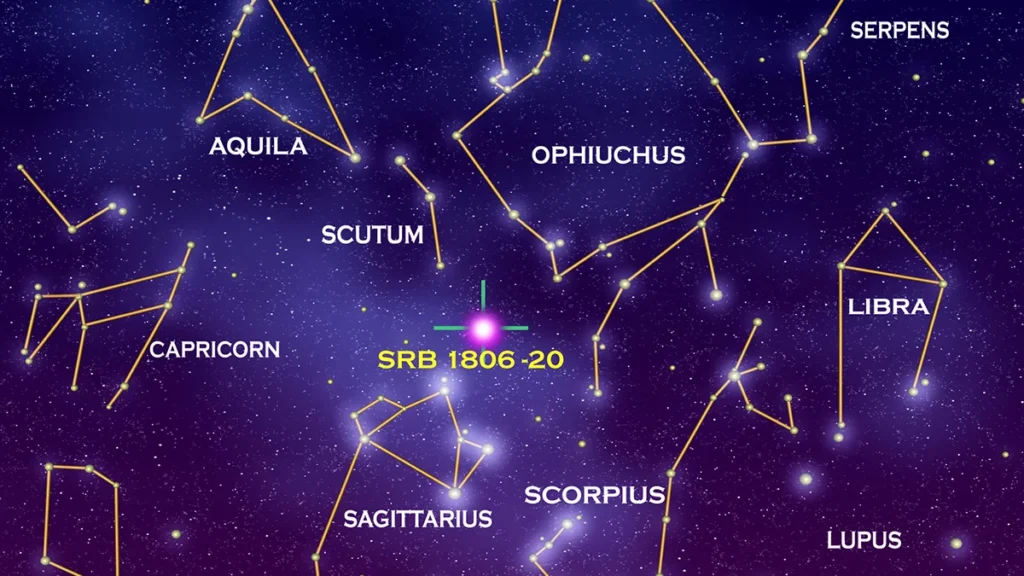
Interesting Facts:
- The Serpent Constellation is especially noticeable in the night sky during the summer months.
- Its stars are quite easy to find thanks to the “snake-like” shape and its proximity to prominent star clusters, such as Ophiuchus.
Myths and Legends of the Serpent Constellation
The Serpent Constellation is deeply connected to legends. The most famous story is the Greek myth about Asclepius, the god of medicine. According to the myth, Asclepius was the son of Apollo. He became a great healer thanks to his mentor, the wise centaur Chiron.
One day, Asclepius saw a snake revive another snake using special herbs. He decided to use this knowledge to heal people. His successes were so remarkable that he could even bring patients back to life. This upset Zeus, who believed that humans should not have immortality. So, Zeus struck Asclepius down with a thunderbolt. Later on, he places Asclepius and the snake in the sky. This snake became a symbol of wisdom and healing.
This story helped turn the snake into a symbol of medicine and rebirth. By the way, the image of the snake wrapped around a staff is still used as a symbol of medicine.
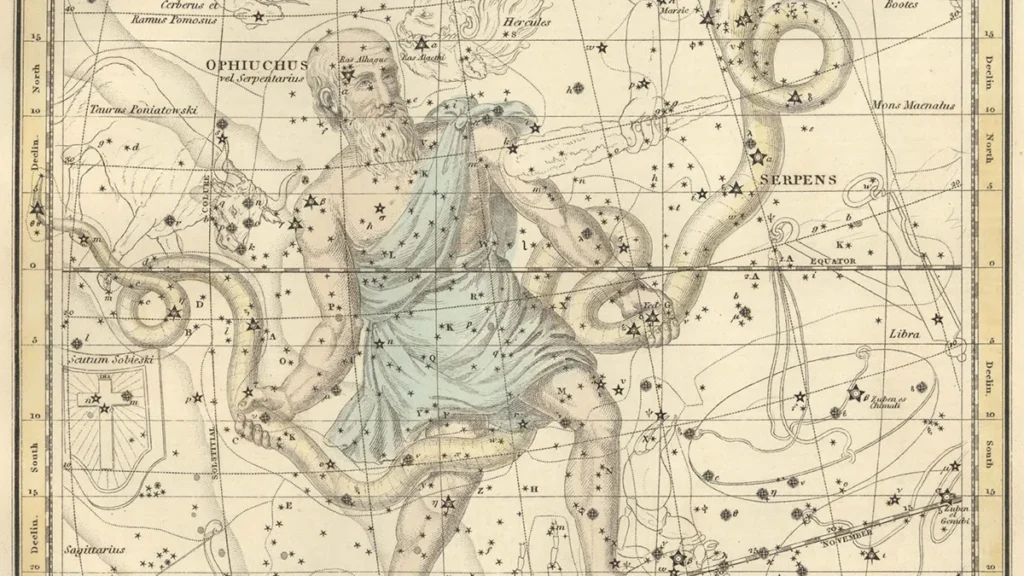
The Brightest Stars of the Serpent Constellation
Although this Constellation does not have any “super-bright” stars, there are several very interesting ones:
- Unukalhai: The main star of this group. It’s an orange giant, 12 times larger than the Sun! Its brightness is 38 times greater than the Sun’s.
- Eta: The second brightest star. It is in the process of becoming a giant. Its brightness is 19 times greater than the Sun’s.
- Mu: A blue dwarf with a mass nearly three times that of the Sun.
- Tau: A special system of eight stars that “live” together due to gravity. The main star is a red giant, 54 times larger than the Sun.
Deep Space Objects in the Serpent Constellation
It is also home to some amazing deep-space objects.
- Messier 5 (M5): One of the oldest star clusters in our galaxy. It’s about 13 billion years old! It contains about 500,000 stars. It’s a true cosmic marvel.
- Eagle Nebula (M16): If you’ve seen the famous “Pillars of Creation” photo, it’s from here! New stars are being born here. Interestingly, the gas clouds may no longer exist. We’re seeing them as they appeared thousands of years ago.
- Hubble’s Object: A very rare ring galaxy. It is located 600 million light-years away from us. It attracts astronomers with its non-standard shape.
- Red Square (MWC 922): A nebula with nearly a perfect square shape. How did it form? Why is it square? These remain mysteries.
How to Find the Serpent Constellation in the Sky – Video
Want to see for yourself where the Serpent Constellation is located in the sky? Watch this video with detailed instructions on how to find it:
Conclusions
The Serpent Constellation reminds us of the close connection between the cosmos and our culture. It contains many fascinating objects. Exploring them is a utopian dream for scientists. Additionally, the constellation is tied to myths that have become deeply embedded in our daily lives. We see the effects in every hospital and pharmacy. So, the next time you gaze at the starry sky, be sure to spot this “snake.”
Frequently Asked Questions About the Serpent Constellation
It is located around Ophiuchus. It is divided into two parts – the head and the tail.
It is depicted as a man holding a large serpent in his hands.
In the summer, it’s easily visible from the Northern Hemisphere. It lies between the constellations Scorpius and Hercules. To pinpoint its position, use a star map.
Yes, you can see it with the naked eye on a clear night. The stars are not very bright, but they are noticeable.
It is best to observe it in the summer from the Northern Hemisphere when it is high in the sky.


